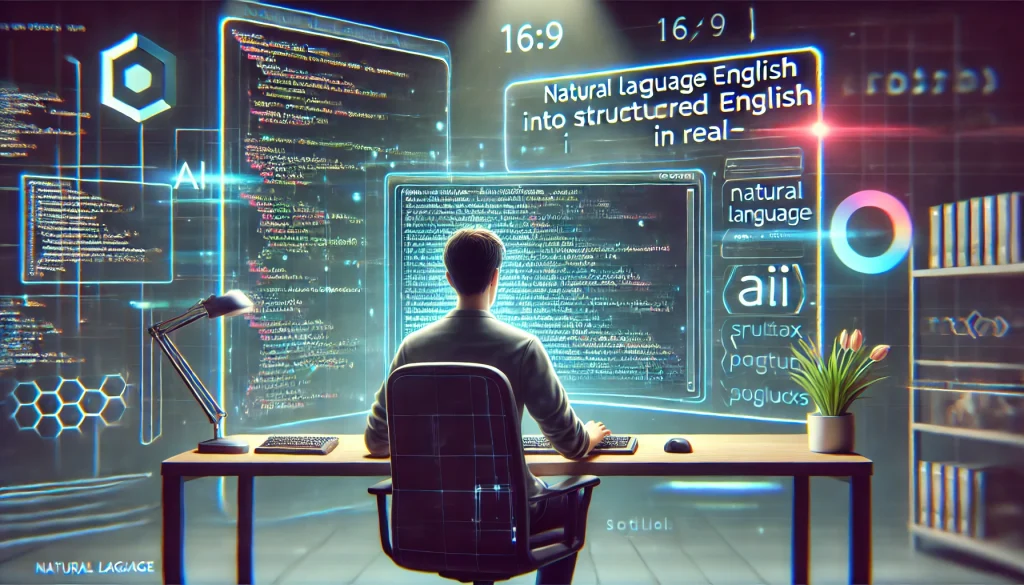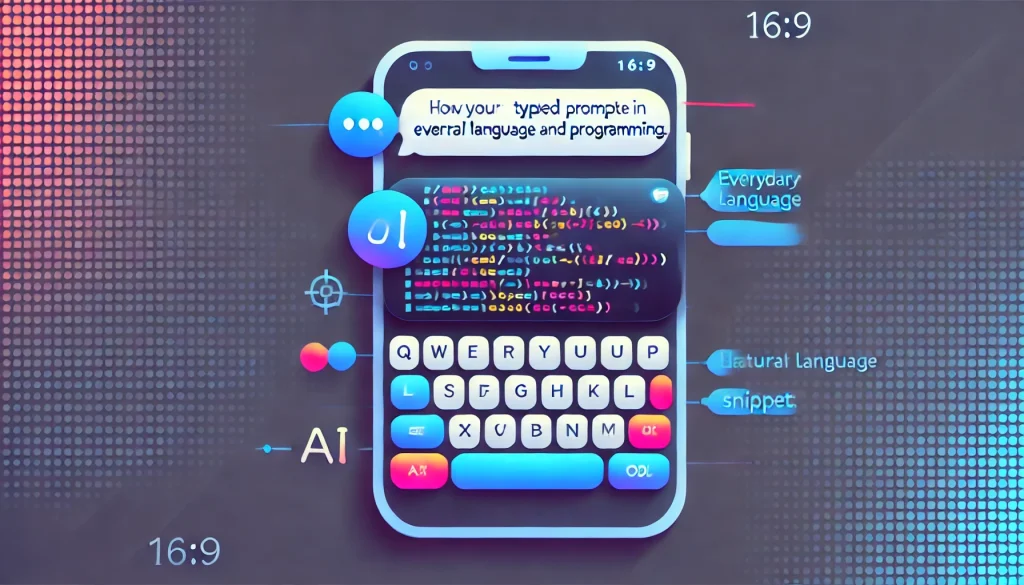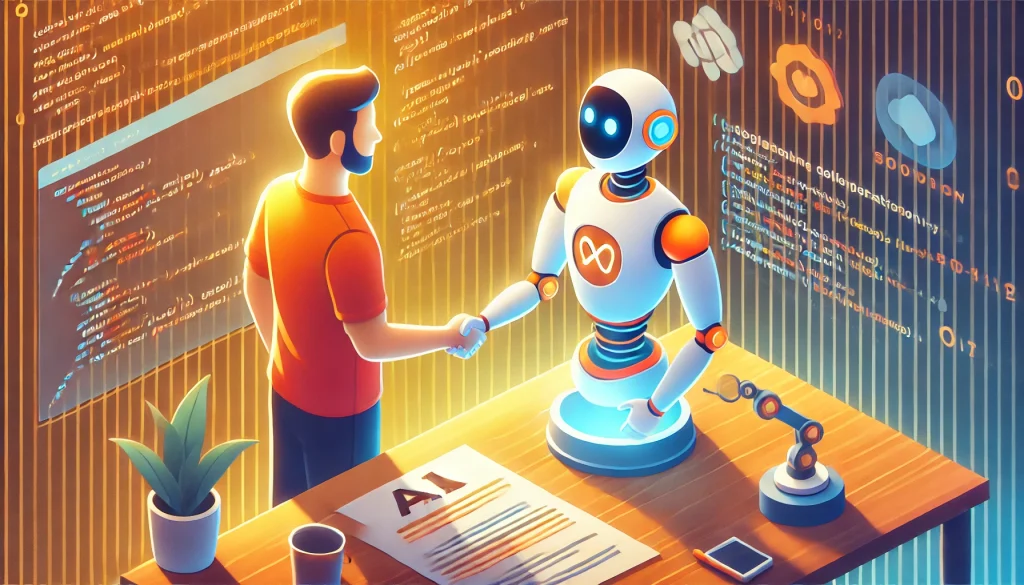It might sound far-fetched, but some of the biggest names in tech believe English is rapidly becoming the most widely used “programming language.” NVIDIA CEO Jensen Huang recently stated that as AI evolves, developers increasingly write natural language prompts to generate code. Tools like GitHub Copilot let programmers describe what they need in plain English, then produce functional code snippets in return.
This shift promises to lower the barrier to entry for coding, accelerate development cycles, and reshape how we approach software creation. At the same time, it poses new challenges: from ensuring correctness in AI-generated code, to developing prompt-engineering skills that yield accurate, secure solutions.

1. The Emergence of Natural Language Prompts
1.1 From Syntax to Semantics
Historically, programming has been about precise syntax—whether it’s Java, Python, or C++. Today’s AI assistants can parse semantic instructions in everyday language. Instead of manually writing loops or class definitions, a developer might type:
“Create a function that retrieves all user records from the database and sorts them by last login date.”
The AI model (e.g., GitHub Copilot) returns a code snippet implementing this logic in the project’s chosen language—bridging the gap between human intent and machine instructions.

1.2 Why English?
English remains the dominant language in open-source repositories, documentation, and official specs. As a result, AI models have seen huge amounts of English-based coding examples, causing them to excel at interpreting English instructions. This “English-as-code” phenomenon is less about forcing non-English speakers to adopt it, but more about leveraging the largest dataset for AI training—currently dominated by English text.
2. Advantages of Natural Language Coding
2.1 Lowering the Barrier to Entry
For newbies or non-technical stakeholders, describing requirements in plain English might feel more intuitive than mastering a language’s syntax. This fosters a more inclusive environment:
- Faster Prototyping: Product managers or domain experts can quickly spin up proof-of-concept scripts.
- Reduced Onboarding Friction: Junior devs can rely on AI to navigate frameworks or libraries they’re unfamiliar with.
2.2 Accelerated Development
Even experienced programmers can skip repetitive boilerplate. Explaining the desired function or design pattern in plain text can expedite feature implementation. No more tabbing through dozens of lines of scaffolding—AI handles that, letting you focus on critical architectural decisions.
2.3 Rapid Iteration
If the AI’s initial code snippet isn’t perfect, developers adjust their plain-English prompts or refine the request. This quick feedback loop is reminiscent of TDD (Test-Driven Development), but done at a higher level—test the output from the AI, refine the prompt, and watch the code evolve swiftly.
3. New Skills: Prompt Engineering & Careful Validation
3.1 The Art of Prompt Engineering
Natural language coding isn’t about dumping a random sentence. Effective “prompt engineering” means:
- Precision in Language: Stating the exact goal, constraints, data structures, or performance needs.
- Contextual Clues: Mentioning relevant classes, libraries, or usage patterns.
- Iterative Refinement: If the AI output misses the mark, clarify or break down the task further.
Developers who master prompting see better results—akin to adjusting your search query until you find the perfect resource.
3.2 Ensuring Code Quality & Security
While AI can handle a lot of syntax and logic, it also might:
- Suggest code with hidden bugs or inefficiencies.
- Include vulnerable or outdated patterns (like older encryption methods).
- Violate license constraints if the snippet is too similar to some open-source code with a restrictive license.
Hence, a robust review and testing process remains vital. Developers must carefully validate outputs, integrate security scans, and maintain consistent coding standards.
4. Real-World Applications
4.1 Pair Programming at Scale
Tools like GitHub Copilot act like a near-instant pair programmer who never tires of writing boilerplate. In large enterprises, dozens of devs can rely on the same model to speed up shipping features or refactoring old modules. Code suggestions can reflect corporate best practices if the underlying AI is tuned or integrated with internal codebases.
4.2 Domain-Specific Chatbots
Beyond general-purpose code generation, some organizations build domain-focused AI that interpret instructions from finance pros, healthcare providers, or scientific researchers. For instance, “Generate a script to analyze patient data for potential risk factors” could yield specialized code pulling from known medical frameworks. This custom approach harnesses English and domain context to produce contextually relevant logic.
4.3 Citizen Developers
Low-code and no-code platforms are expanding their usage of natural language prompts. Non-technical staff might define workflows in plain text: “When a new lead is created in CRM, send a follow-up email within 24 hours,” and the system automatically builds logic blocks. This democratizes app creation, but begs questions about maintainability and advanced debugging if something breaks.
5. Challenges & the Path Forward
5.1 Language & Cultural Barriers
Even though English data dominates, developers and businesses in non-English locales face friction if prompts, docstrings, and community resources aren’t easily accessible in their native tongue. Over time, we might see more AI training on multilingual corpora, bridging the global dev community.
5.2 Over-Reliance & Skill Erosion
If devs rely solely on plain-English requests, they might lose out on deeper knowledge of the underlying language constructs. Understanding the “why” behind certain solutions remains crucial to debug advanced issues or optimize performance. Balanced usage—AI for speed and syntax, human for design and validation—works best.
5.3 Evolving Tools & Standards
Industry leaders and open-source communities will likely define new best practices for natural language coding. Tools for code scanning, licensing checks, and real-time AI feedback loops may standardize. We’ll see frameworks dedicated to bridging AI outputs with existing dev pipelines—linting for AI-suggested code, or integrated test generation.

Conclusion
The idea that English (or any human language) is becoming a universal “programming language” signals a monumental shift in how we develop software. By letting AI handle syntax and structure, we empower people to express logic in simpler terms, accelerating creation and bridging skill gaps. However, devs must remain diligent—prompt engineering, thorough reviews, and strong security checks are non-negotiable.
Key Takeaways:
- AI Tools reduce coding friction by translating natural language instructions into functional code.
- Prompt Engineering emerges as an essential skill for refining AI outputs.
- Code Quality & Security require robust oversight—AI suggestions aren’t always perfect.
- Future coding might revolve around iterative conversation and human validation.
The future is bright for “natural language as code,” but success demands a balanced approach that preserves the creativity, expertise, and critical thinking we associate with traditional programming. By blending the best of human insight with AI’s generative power, we open the door to more inclusive, efficient, and innovative software development.















